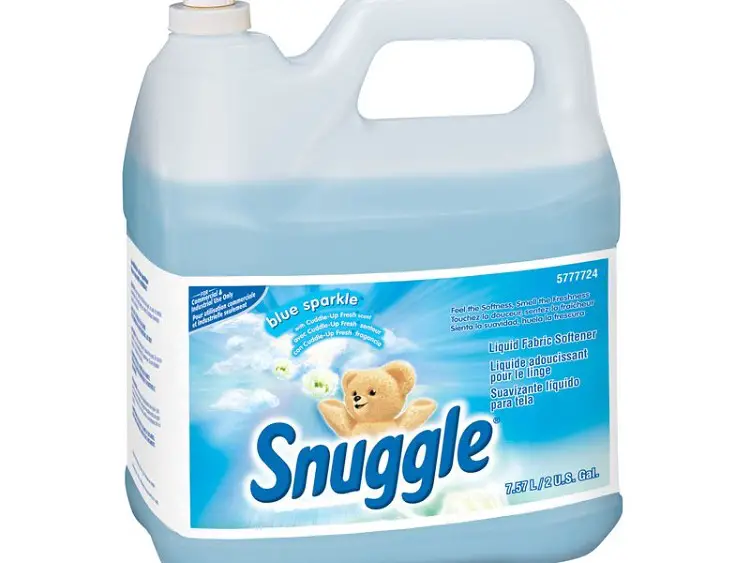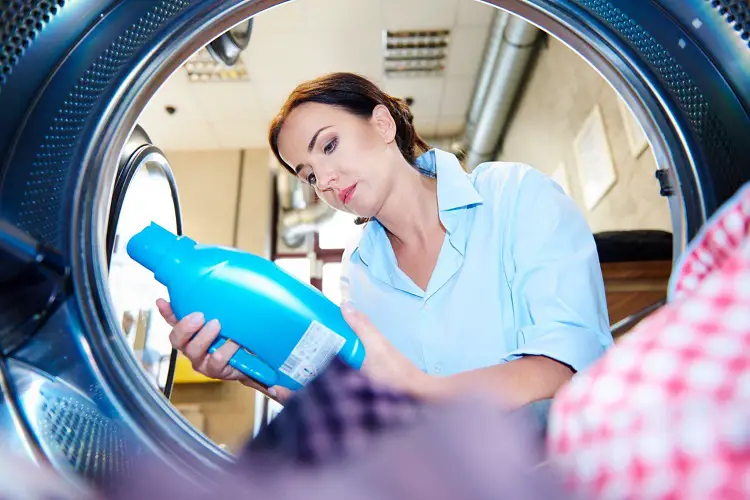If there is something that house owners are conscious of, it is what goes into their septic system.
As a result, they are now cautious about what they flush into their systems, ensuring that what goes in are only permissible items.
Some people have fabric softeners as one of the things that shouldn’t find their way to their septic system.
In as much as there are beautiful effects that fabric leaves on your laundry, some of which make your materials cuddly soft, smelling fresh, and static-free.
But then there may also be some devastating impact on your septic system, which is why this question “is snuggle fabric softener septic safe?
Septic tanks should not be used with fabric softeners whose primary purpose is to make laundry smell good and soft.
This article explains everything you need to know about fabric softeners and the best alternative measures.
What are Fabric Softeners?
Fabric softeners come in two forms – a liquid added during the rinse cycle and dryer sheets.
First developed in the early 1900s to soften fabrics after dyed, liquid fabric softeners initially contained soap and oils, like tallow (rendered animal fat).
Fabric softeners, also called fabric conditioners, help protect clothing by strengthening fabric fibers during laundering, thus reducing friction during the process.
A fabric softener can also reduce static cling, wrinkles, and decrease drying time for clothes.
The fabric softeners do their job by strengthening the fabrics and reducing friction during the laundry process.
The after-effect is that clothes treated with softeners retain their original shape; color fading is reduced, as well as pilling and fuzz.
The main ingredients in fabric softener include:
- Conditioning agent – creates the “slippery” barrier that gives the fabric its softness and prevents static.
- Emulsifiers – make the oils in the product water-soluble.
- Preservatives – to keep the formula stable
- Fragrances – there are plenty of fragrance-free options available in the market.
Fabric softener isn’t necessary for effective laundering. Still, its usage is encouraged because of its ability to extend the lifetime of clothing and make the fabric smoother and better-smelling than it would have been if fabric softeners were absent.
Is Snuggle Fabric Softener Septic Safe?

In as much as snuggle fabric softener is a beautiful fabric softener, it is advisable not to use it for your septic system because of the effects that fabric softeners have on a septic system.
Fabric softeners do have the chance of causing damaging and devastating effects on your septic system, the same way other household cleaners and chemicals can.
Are Their Effects of Fabric Softener on Septic System?
Septic systems usually need the help of beneficial bacteria to function properly because they assist in the breakdown of waste.
This could become jeopardized by the action of harsh chemicals in the system because it may hurt the microorganisms and prevent the system from performing as efficiently as it could otherwise.
Fabric softeners do have the chance of causing damaging and devastating effects on your septic system, the same way other household cleaners and chemicals can.
The effect of fabric softener on your septic system is two-fold. Sometimes, it could be a result of the chemicals in the fabric softener attacking your septic system, which may also have physical disadvantages as well on your system.
The quats in fabric softeners are antibacterial, which makes them disastrous to the good bacteria in your system’s tank and kills them.
They also contain nitrogen, and as the Nitrogen content in the septic system increases due to the frequent use of fabric softener, it simply entails more nitrogen finding its way into the groundwater.
When this happens, the natural environment is affected, and this is because Nitrogen runoff – whether from agriculture, landscaping, or septic systems – is the primary cause of harmful algae blooms.
Fabric softeners are also petroleum-based, as oil-based, so when they find their way into your septic system, they directly add to the scum floating on the surface of your tank’s effluent.
Should the scum layer become too thick, it causes damaging clogs or even catastrophic system failure.
The emulsifiers in your fabric softener can interfere with your septic tank’s natural settling process, preventing the solids from settling to the bottom and the FOGs from rising to the top.
And if care is not taken, Clogs may occur, and the after-effect is that it may damage the system or even lead to whole-system failure.
Safe Alternatives to Fabric Softener
There is always this need to have your clothes soft and fresh-smelling hence the use of fabric softener, but then you weigh the effects of using it on your septic system if you are worried about it.
In that case, many safe alternatives (both for you and your septic system) will give you the same effect as the chemically laden, petroleum-based fabric softeners you have been using.
Some of the safe options include
- White Vinegar
- Dryer Balls
The use of distilled vinegar offers great solutions to many common laundry issues.
All you have to do is add half-cup to your washer’s final rise cycle. It will naturally soften and deodorize laundry without leaving a residue.
Also, you can go for dryer balls made from wool, aluminum, or even silicon instead of dryer sheets. They can help prevent static from building up in your laundry.
You can improvise to have the fresh scent fabric softener added to your clothes if you are concerned about stopping using fabric softener.
All you have to do is add 10 drops of your favorite essential oil and the vinegar in the rinse cycle or apply them directly to the dryer balls.
How To Know If Your Septic System Has Been Negatively Affected
If you are still using fabric softener with your septic system and want to know if it has started affecting your system adversely, then you have got to be observant and look out for signs of septic system failure.
Some signs include having Lush grass above or around your system, foul odors in and around your home, or gurgling drains.
If you notice any of these signs, your system needs servicing.
Septic System Do’s and Don’ts
Do’s
- Keep a sketch of the location of your septic tank and drainfield with your maintenance record.
- Annually inspect your septic system.
- Ensure your septic tank cover is accessible for inspections and pumping. Install risers if necessary.
- Conserve water to avoid overloading the system. Ensure to repair of any leaky faucets or toilets.
- Call a professional whenever you experience problems with your system or any signs of system failure.
Don’t
- Don’t go down into a septic tank. Septic tanks produce toxic gases from their natural treatment accesses, which can kill in minutes. Extreme measures should be taken when inspecting a septic tank, even when just looking in.
- Don’t allow anyone to drive or park over any part of the system.
- Don’t make or allow repairs to your septic system without getting the permission of the required health department. Contact a professional licensed onsite contractor when necessary.
- Avoid using septic tank additives. Under normal operating conditions, these products usually do not help, and some may even harm your system.
- Don’t allow home water or softeners backwash to enter the septic system.
- Don’t use a garbage disposal without checking with your local regulatory agency to ensure that your septic system can accommodate this additional waste.
Related Posts:
- Can I Use Regular Fabric Softener in my HE Washer?
- Can I Put Fabric Softener in the Bleach Dispenser?
- Can I Use Fabric Softener in my Carpet Cleaner
Wind Up
Is snuggle fabric softener septic safe? This is an important question when using fabric softeners, and I hope this article has answered that.
In as much as snuggle fabric softener is a beautiful fabric softener, you shouldn’t use it for your septic system because of the effects that fabric softeners have on a septic system.
Fabric softeners do have the chance of causing damaging and devastating effects on your septic system, the same way other household cleaners and chemicals can.
